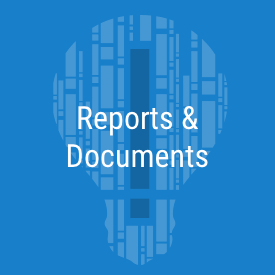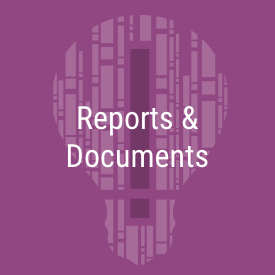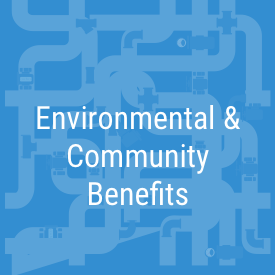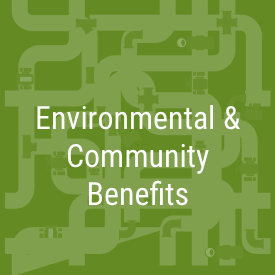This project will help meet and exceed long-term water conservation and reliability goals will increase water-use efficiency in the landscape, residential, schools and commercial sectors through water conservation rebates, technical assistance and public education.
Water Conservation rebate programs may include a residential leak detection and assistance program, an expanded landscape rebate program that promotes California-native plant species as well as water-saving plants, advanced metering infrastructure (AMI) and a restaurant-efficiency and school-efficiency upgrade program.
Water conservation helps manage risks to water supply reliability from climate change and reduces greenhouse gases. Without water conservation, Valley Water would need to import more water or develop additional infrastructure to yield a commensurate water supply every year. Water conservation reduces reliance on imported water supply by creating a more diverse portfolio of supply that is more resilient to risks and uncertainties.
For example, in fiscal year (FY) 2023, approximately 83,174 acre-feet of water were saved through Valley Water’s long-term conservation programs and plumbing code regulations. Water conservation programs ensure water supply resiliency as the risk of drought increases due to climate change.
Supplying water requires a lot of energy to extract, convey, treat, and distribute, which may account for up to 10% of California’s greenhouse gas (GHG) emissions. Hence, reducing water demand through conservation reduces GHG emissions. Valley Water’s 2011 “From Watts to Water” report explains in more detail the crucial role water conservation plays in reducing GHG emissions.
Water conservation also helps adapt to climate change by conserving limited water supply and lessening demand to meet an uncertain water supply future.








New and Enhanced Programs
The SCW Project A2 implementation entails providing approximately $700,000 a year to increase the Landscape Rebate Program's Landscape Conversion Rebates from $1 per square foot to $2 for all qualifying properties, as well as raising the maximum rebate from $2,000 to $3,000 for single-family homes and from $50,000 to $100,000 for multi-family homes, and commercial, industrial, and institutional properties. The remaining funding will be used for technical assistance and educational programs as described below. On July 1, 2021, Valley Water launched several new and improved programs, including an increased rebate for the Landscape Rebate Program and an enhanced partnership with Our City Forest for their Lawn Busters Program.
Landscape Rebate Program
In FY24 (July 1, 2023 – June 30, 2024), Valley Water issued 1,118 rebates totaling nearly $3.2 million to convert more than 1.4 million square feet (sq ft) of lawn into low water-use landscapes, irrigation equipment upgrades, and rainwater capture system installations. Of the nearly $3.2 million in rebates issued and for nearly 620 of these rebates, the Safe, Clean Water Program provided $1 million to successfully convert 1,000,000 sq ft of lawn to low water-use plants. Hence, the Safe, Clean Water Program supported approximately 31% of Landscape Rebate Program rebate funding in FY24.
For more information, please visit www.valleywater.org/saving-water/rebates-surveys/landscape-rebates.
Lawn Busters Program
In July 2021, Valley Water expanded a partnership with the local nonprofit organization Our City Forest to offer the Lawn Busters Program to low-income community members, United States veterans, and other disadvantaged community members. With the Safe, Clean Water Program funding contributions, payment to Our City Forest for converting lawns to low-water-use landscapes was increased from $2 per square foot to $4 per square foot. In July 2023, Valley Water extended the Lawn Busters contract with Our City Forest through FY24. Considering the substantial waitlist for the program, the remainder of the contract budget will be utilized to maximize lawn conversions. The Do-it-Yourself (DIY) workshop series has been discontinued. In FY24, 23 lawn conversion projects were completed, totaling 23,000 square feet. The Lawn Busters program concluded at the end of FY24 and will be replaced by an expanded no-cost direct install program tailored for low-income customers set to launch in FY25. For more information, visit www.ourcityforest.org/lawnbusters/.
Qualified Water Efficient Landscaper Training
Valley Water used the Safe, Clean Water Program funding to secure a contractor, California Water Efficiency Partnership (CalWEP), to administer the Qualified Water Efficient Landscaper (QWEL) training for landscape professionals who live or work within Santa Clara County. The QWEL training presents an affordable, proactive local approach to reducing landscape water demand. The QWEL training equips our local landscapers, contractors, and designers with the tools they need to provide water-efficient landscaping to the residents of Santa Clara County. Through this pilot, the training provided 165 participants with knowledge in water-efficient and sustainable landscape practices, including water management and preservation of other valuable resources, and was offered online for English trainings and in-person for Spanish trainings.
The first QWEL class was held in September 2022. In spring 2024, the contract concluded with an onsite training offered in Spanish at Valley Water’s facility, hosting 30 attendees. Many of the strategies and technologies taught in the course directly support water conservation programs provided by Valley Water, such as the Landscape Rebate Program and Graywater Rebate Program, and Valley Water will work to make this an ongoing program.
For more information, visit www.qwel.net.
For a full list of Valley Water Conservation Programs, visit www.watersavings.org.
August 2024
- Water Conservation Savings Model
- Evaluates a wide variety of water saving programs
- Presented to the Safe, Clean Water Independent Monitoring Committee on December 8, 2021
FY22-36 Key Performance Indicator for Safe, Clean Water Program
-
Award up to $1 million per year toward specified water conservation program activities, including rebates, technical assistance, and public education, within the first seven (7) years of the Program.
Benefits
-
Helps county residents exceed the countywide goal of conserving 110,000 acre-feet of water per year by 2040
-
Increases water supply reliability by creating a more diverse portfolio of supply that is more resilient to risks and uncertainties
-
Reduces greenhouse gases by reducing water usage, thereby decreasing the energy required for water conveyance, treatment, and distribution
-
Supports climate change adaptation by conserving limited water supply and lessening demand to meet an uncertain water supply future
-
Reduces pollution to the Bay by reducing irrigation runoff
Geographic Area Benefit
Countywide
About the Safe, Clean Water and Natural Flood Protection Program
In November 2020, voters in Santa Clara County overwhelmingly approved Measure S, a renewal of Valley Water’s Safe, Clean Water and Natural Flood Protection Program.
The program was first passed by voters in 2000 as the Clean, Safe Creeks and Natural Flood Protection Plan, then again in 2012 as the Safe, Clean Water and Natural Flood Protection Program. The renewal of the Safe, Clean Water Program will continue to provide approximately $47 million annually for local projects that deliver safe, clean water, natural flood protection, and environmental stewardship to all the communities we serve in Santa Clara County.
While evaluating ways to improve the 2012 program, Valley Water gathered feedback from more than 21,000 community members. That helped Valley Water create the six priorities for the renewed Safe, Clean Water Program, which are:
Priority A: Ensure a Safe, Reliable Water Supply
Priority B: Reduce Toxins, Hazards and Contaminants in our Waterways
Priority C: Protect our Water Supply and Dams from Earthquakes and Other Natural Disasters
Priority D: Restore Wildlife Habitat and Provide Open Space
Priority E: Provide Flood Protection to Homes, Businesses, Schools, Streets and Highways
Priority F: Support Public Health and Public Safety for Our Community
Each year, Valley Water prepares a report providing a progress update for each of these program priorities, along with fiscal year accomplishments.
To ensure transparency and accountability to the voters, the ballot measure also created an Independent Monitoring Committee, appointed by the Santa Clara Valley Water District Board of Directors. The Independent Monitoring Committee annually reviews the program’s progress to ensure the outcomes are achieved in a cost-efficient manner and reports its findings to the Board. Additionally, the IMC also reviews each proposed 5-year implementation plan prior to its submittal for Board approval.
In addition, the program requires three independent audits.


